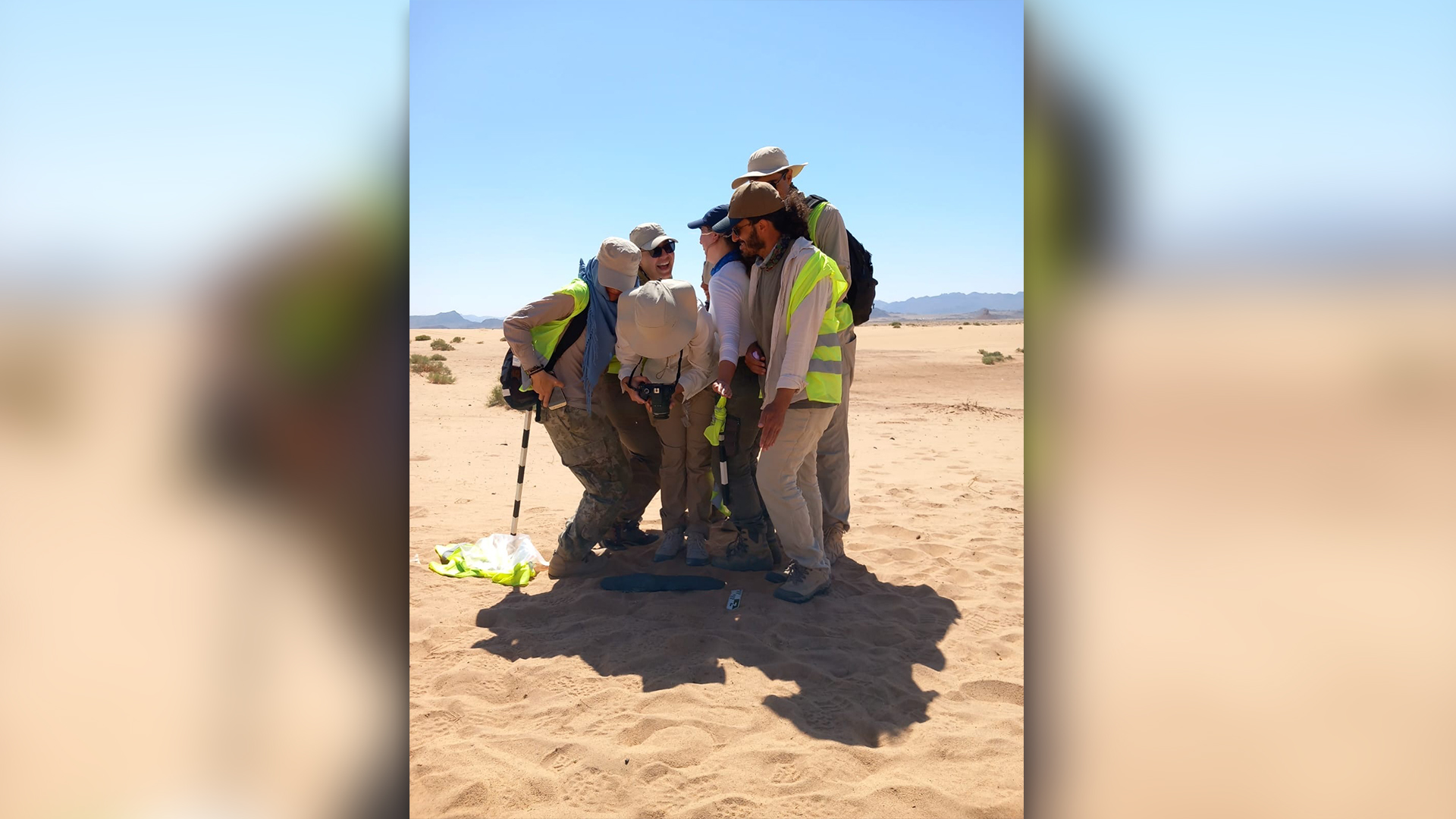Ancient 20-inch-long hand ax discovered in Saudi Arabia may be world's largest
What may be the world's largest prehistoric hand ax, measuring over 20 inches long, was found in Saudi Arabia.
Archaeologists in Saudi Arabia have discovered what may be the world's largest prehistoric hand ax. The stone tool measures 20.2 inches (51.3 centimeters) long and, despite its size, is easily held with two hands, according to a statement.
An international team of researchers found the basalt hand ax on the Qurh Plain, just south of AlUla, a region in northwest Saudi Arabia. Both of the hand ax's sides have been sharpened, suggesting that it could have been employed for cutting or chopping. However, it's still unclear how the stone tool was used and which species, for instance Homo erectus or Homo sapiens, crafted it.
It's also unknown how old the tool is, as "the handaxe requires much more research to determine an accurate date," Ömer Can Aksoy, an archaeologist and the excavation's project director, told Live Science in an email. However, other tools found at the site may date to 200,000 years ago, according to the team's assessment of their form and characteristics, so it's possible that the hand ax dates also to the Lower or Middle Palaeolithic, Aksoy said.
Related: 7,000-year-old cult site in Saudi Arabia was filled with human remains and animal bones
Researchers nearly missed the enormous hand ax, which is 3.7 inches (9.5 cm) wide and 2.2 inches (5.7 cm) thick. "It was the last 15 minutes of our daily work and it was a hot day," Aksoy said. "Two of our team members found the giant handaxe lying over the surface of a sand dune."



After hearing the team members' calls, the rest of the crew joined them and then excavated the area in depth. "We recorded 13 more handaxes on the site," Aksoy said. "Each team member took off their yellow vests in order to highlight the locations of each find over the sand dune."
While the other newly found hand axes were similar in style, they were smaller in size. "After the initial excitement when we discovered this remarkable object we carried out an initial search to see if other similar sized objects had been found," Aksoy said. While the search for large hand axes continues, "this might be one of the longest," he said.
Get the world’s most fascinating discoveries delivered straight to your inbox.
Surveys at Qurh Plain are ongoing. The 2023 field season, which lasts from October to December, is nearly over. Archaeological work is planned to start again in winter and spring 2024.

Laura is the managing editor at Live Science. She also runs the archaeology section and the Life's Little Mysteries series. Her work has appeared in The New York Times, Scholastic, Popular Science and Spectrum, a site on autism research. She has won multiple awards from the Society of Professional Journalists and the Washington Newspaper Publishers Association for her reporting at a weekly newspaper near Seattle. Laura holds a bachelor's degree in English literature and psychology from Washington University in St. Louis and a master's degree in science writing from NYU.




